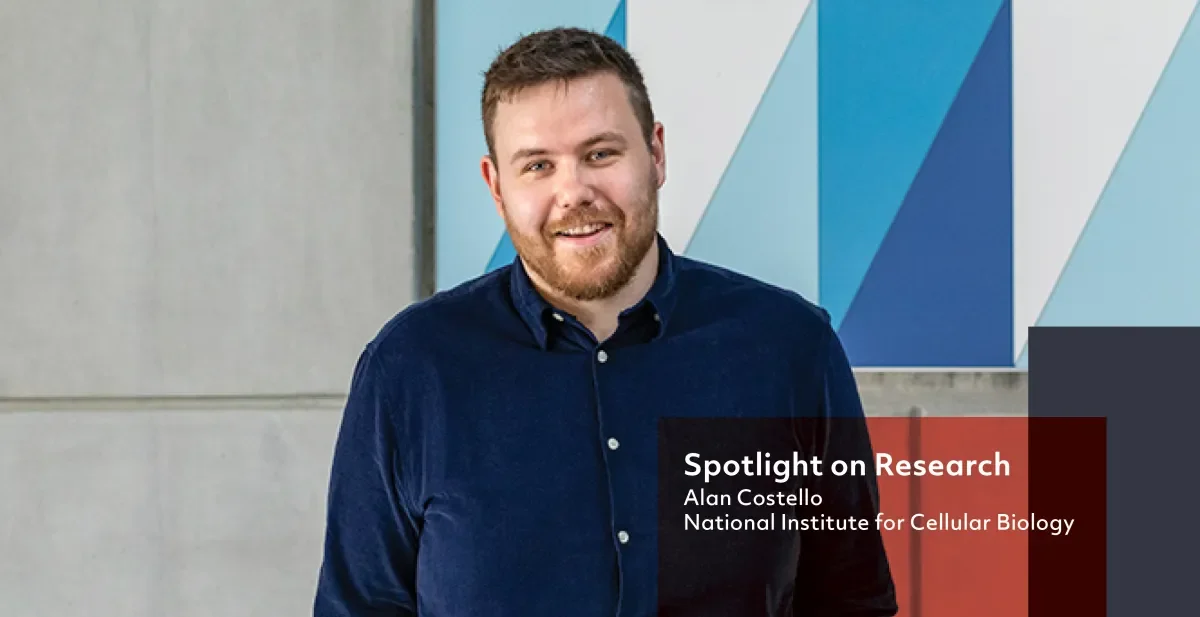

A circular boost for Chinese hamster ovary cells
Alan, your research looks at Chinese hamster ovary cells. Why?
“Chinese hamster ovary cells, or CHO cells, are widely used to produce complex drugs. It was discovered decades ago that cells from the ovary of a Chinese hamster grew quickly and stably in the lab, and they have become a type of cell that lots of researchers and companies now use as little ‘factories’ to grow complex biotherapeutic molecules.
In particular, they are used in the bio-pharmaceutical industry, where giant vats of these cells are grown and kept happy and given instructions to produce specific molecules called recombinant proteins that are then used for medicines to treat conditions like rheumatoid arthritis and cancer.”
What issue are you researching?
“People are always seeing to improve the efficiency of CHO cells to produce recombinant proteins. If you can get each cell to produce more protein in less time, you have a more efficient means of producing your medicine. This was an issue I looked at in my PhD at DCU, which I finished last year.”
How have you been making the CHO cells more productive?
“To try and improve productivity, some people change the environment in which the cells grow. The cells grow in a nutritious liquid medium, components of which have been optimized along with strategies on how to feed the cells, to keep them happy. But these approaches are reaching a plateau. So I have been looking at ways to engineer the cells themselves to produce the required protein more efficiently.”
How did you do that?
“We did that in a few ways. One of the more experimental approaches was where we engineered some messenger RNA, which is a type of molecule that gives the cells instructions about how to build proteins. I wanted to build a piece of messenger RNA that was shaped in a circle and remove its normal stop signal, so that it would constantly tell the protein-building machinery to keep going.”
Clever – did it work?
“We tried it for a well-known protein called EPO. We designed the circular messenger RNA in such a way that it should keep telling the cell to make the protein and we engineered a ‘self-cleavage’ instruction in too, so that the proteins would be chopped to the correct size. The cells didn’t seem to like it much, but they made more of the EPO proteins, and importantly the cells treated the proteins as normal in terms of sticking sugars onto them afterwards. We published the findings in a journal called Metabolic Engineering a few months ago and we got lots of positive responses.”
Why did you want to do a PhD in biotechnology?
“My science teacher in school, at Portmarnock Community School, made biology and physics really interesting. He saw I had an aptitude and really encouraged me, so I decided to study Biotechnology as an undergraduate in DCU. Then when I got to the end of the undergraduate course I really wanted to learn more about the subject. I heard of an interesting project during a final year lecture by Professor Niall Barron. The project was under the supervision of Professor Martin Clynes in the National Institute for Cellular Biotechnology here in DCU with Professor Niall Barron as a co-supervisor on the project.”
You obviously did a very successful PhD, how are you finding being a post-doc now?
“When you are doing a PhD you are really focused on getting to a certain point, when you can write up your thesis and defend it to earn the degree. That’s the goal. Once you have done that and you become a post-doc, it is a different kind of role: your job is more about using your skills to help advance projects in the centre, so I am getting used to that.”
And how do you like to spend your time off?
“I don’t take enough time off! But I did go skiing earlier with a group of friends where a lot of us had finished our PhDs so we treated ourselves to a holiday. I do like to travel and I’m looking forward to visiting a few different places at conferences over the coming months. Oh and I play tag rugby.”
